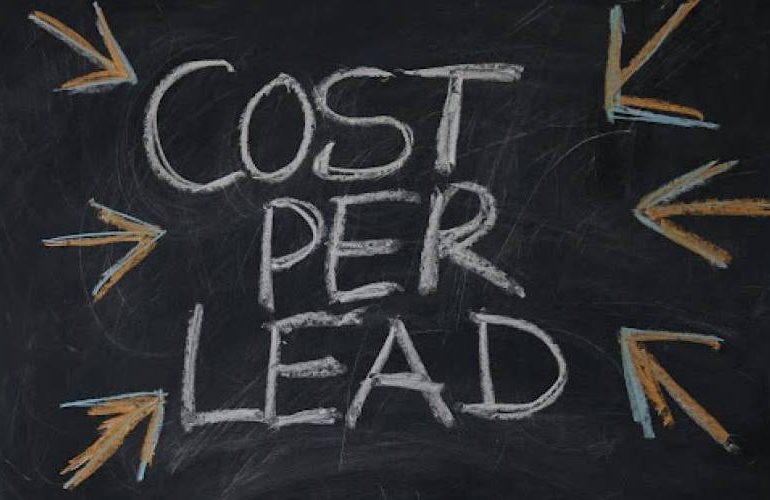By Joe Martin
For many businesses, marketing can feel like a black box that maybe doesn’t always get the return you expect. For example, would you rather spend $500 on search engine optimization, paid advertising, or just burn up the money instead. According to the US Small Business Administration, a company that makes less than 5,000,000 a year should allocate between 7% and 8% of its revenue to marketing.
This budget should be split between brand development costs and the costs of promoting your business. But how do you make sure that the money is well spent?
If you are spending money on marketing, have a marketing plan, and are getting customers, but not making any money, then you probably need to take a look at your customer acquisition costs or CAC.
What is CAC, how do you calculate it and what steps can you take to improve it? By the end of this post, you will know the how what, and when to start tracking CAC to improve your marketing spend, and it will become a long-term piece of your business plan.
CAC Meaning
CAC stands for customer acquisition cost. It describes how much a company needs to spend to gain a new customer. CAC marketing is now used by many companies that use web analytics or intelligence to make data-driven decisions.
CAC helps companies figure out if they’re getting their money’s worth on investments for growing their clientele. This can be from paying to have potential customers, clicking on banners or investing in articles or graphic content. Today, internet marketing methods can now target specific groups of customers. Before, companies had to cast a wide net with advertising.
They had to aim their marketing content at a broad segment of potential customers with the hope that it would bring in some new customers. However, this approach lacks specificity and many companies saw undersized returns on their marketing investments. Modern, targeted campaigns when combined with CAC, hones in on specific groups of people.
It can also tell you how much you’re spending to bring a new prospect onboard and convert them into a paying customer.
What goes into calculating CAC?
There are a few things that need to be considered when calculating the cost of customer acquisition.
These include:
- Advertising costs
- Marketing team costs
- Sales team costs
- Creative costs
- Technical costs
- Publishing costs
- Production costs
- Inventory upkeep costs
How to calculate CAC?
CAC is calculated by dividing the costs spent on acquiring customers by the number of customers acquired during the time the money was spent.
For example, a company that spends $1,000 on marketing in a year and gained 100 customers in that same year, their CAC comes out to $1.
The customer acquisition cost formula is $1000 ÷ 1000 customers = $1 per customer.
If the company only gained 500 customers, then the CAC will be $2.
The formula to calculate the CAC is pretty simple.
However, adding up total expenditures takes a lot of factors into consideration including the cost of multiple marketing strategies and staff salaries.
Some companies may even make investments like marketing in a new region or early stage SEO and do not expect to see results from these until a later date.
This creates some issues when calculating the CAC.
It is therefore recommended that you perform multiple variations to account for these situations.
Example of CAC
Let’s take a fictitious home services company that provides HVAC and plumbing services.
The company marketing efforts include:
- Paid sales and marketing staff
- Social media campaigns
- Pay-per-click campaign
- Magazine ads
The company decides to track how much it costs to acquire new customers for one year from January 1st to December 31st. They will consider what they spent throughout the year and how many customers they have by the end of the year.
Here’s a breakdown of their customer acquisition cost formula.
- Paid sales and marketing staff – $150,000 total spent
- Social media campaigns – $12,000 total spent
- Pay-per-click campaign – $10,000 total spent
- Magazine ads – $8,400 total spent
Total Marketing Expenses: $180,400
New Customer Acquired: 2,512
CAC $180,400 ÷ 2,512 = $71.82
The calculations show that the company spent on average $71.82 for each new customer they acquired in that year. This CAC is pretty high for a home services company and should definitely be evaluated. You will want your CAC to be lower than the average sales price of your product or service to make sure you are actually making money on your efforts.
However, this is just the start of the CAC story. The company also has to consider how much each customer spends which can be calculated using customer lifetime value (CLV).
Customer Lifetime Value and Customer Acquisition Cost
Customer lifetime value (CLV) or Lifetime Value(LTV) is an estimate of the amount of money a company may generate from a customer throughout the customer’s “lifetime” as their customer. It can take into account reasons why customers stay around beyond just your product as well. CLV is determined by adding up the revenue earned from a customer (annual revenue multiplied by the average customer lifespan) minus the initial cost of acquiring them.
You can also search for a CLV calculator using your favorite search engine. The CLV gives you a better understanding of what the customer acquisition cost means to your company. However, the amount of time a person remains a customer and how much they spend will vary from company to company. This means that you will have to consider other factors that can impact your company specifically.
Here are some of the most important elements of CLV for most organizations.
- Average customer lifespan – how long the individual remains a customer.
- Rate of customer retention – the percentage of customers who buy again.
- Profit margin per customer – takes into account CAC and other expenditures. These can include the overall cost of goods sold (production and marketing costs) as well as how much it costs to run the company.
The profit margin per customer is calculated by taking your net income per customer(minus the CAC) and dividing that number by your revenue from the customer over their lifespan as your customer. Next, multiply that number by 100 to get the percentage.
- The average amount an individual spends over their lifetime as a customer – Add what each customer spends over their lifetime and divide it by the number of customers.
- Average gross margin per customer – This can be calculated for a certain period. For example, a year or according to the life span of a customer.
If you’re doing a life span calculation, take the profit margin per customer over their lifetime and divide it by 100. Then multiply that by how much they spend during their lifetime.
Example of CLV
Let’s look at a fake company that provides marketing services for small businesses
Here is a look at this company’s numbers:
- CAC – $180 per customer.
- The average customer stays for 10 years.
- Their profit margin per customer is 19%.
- The average amount spent by each customer over their lifetime with the company – $57,052.
- The average gross margin per customer over their lifetime with the company – Calculated by 0.19 x $57,052 = $10,840.
How to Improve CAC
There are several methods you can use to improve your customer acquisition costs, these include:
Know CAC per Marketing Channel
Most marketers want to know the CAC for each of their marketing channels. If you know which channel has the lowest CAC then you know where you can spend more on marketing. The more you put in your marketing budget in the lower CAC channels, the more customers you can get for a fixed budget amount. The best approach you can take is to use your spreadsheet and gather all your marketing receipts for the year and add up those amounts by channel.
Improve on-site conversion metrics
Set up a goal on Google Analytics and perform A/B split testing with new checkout systems. Do this to reduce shopping cart abandonment rate, improve your landing page, speed of your site, mobile optimization and other factors that can enhance your overall site performance.
Add value to your offering
The value users perceive from your product and services is subjective. That is why you may not have the desired effect if you’ve implemented features similar to what other companies use. Take a different approach and try to interact with customers using surveys and emails that can help you figure out what best fits their needs. You can also study statistics like your customer retention rate and subjective feedback from any review you get.
Use a CRM system
A CRM system helps you keep track of new customers, their movements through your sales funnel, how much they buy, loyalty programs and more. It can also be used to manage email lists and campaigns such as promotions, seasonal email advertising and drip campaigns.
What CAC can do for you
Measuring and tracking CAC is important for your company. Companies can use CAC to allocate resources and funds and strategize their marketing campaigns. It can also help to guide them in their hiring and salary process. CAC and CLV combine to make a powerful tool that can help you assess your marketing return on investment (ROI).





